Below are some of the diseases and other oddities we’ve seen over the years.
Besides eye disease, beak deformities, and some other problems, we’ve seen oddities that we at first thought were diseases, but which turned out to be benign (below the diseases section).
IMPORTANT: Prevent the spread of bird diseases by keeping feeders and the areas below them clean. Remove them altogether for 2 weeks if you see a diseased bird at your feeders (but see the Hilton Pond article in the Resources section below for another perspective).
Even better, make sure you have a yard that is full of so many other natural sources of food that feeders aren’t even necessary! If you have lots of native plants that “produce” insects and have areas of leaf litter and so on, birds will naturally spread out around your yard and be less likely to transmit diseases. (And it’s more fun to watch them this way, too!)

The most common are eye problems, most or all attributed to what has been called House Finch Eye Disease — an avian conjunctivitis — although other birds have been affected, too.
I can’t tell if this goldfinch has the House Finch Eye Disease, but it definitely isn’t healthy.
Eye disease
Here are two of the first birds we saw with eye diseases, such as House Finch Eye Disease. We had always participated in the House Finch Disease community science project until it lost its funding and was discontinued.

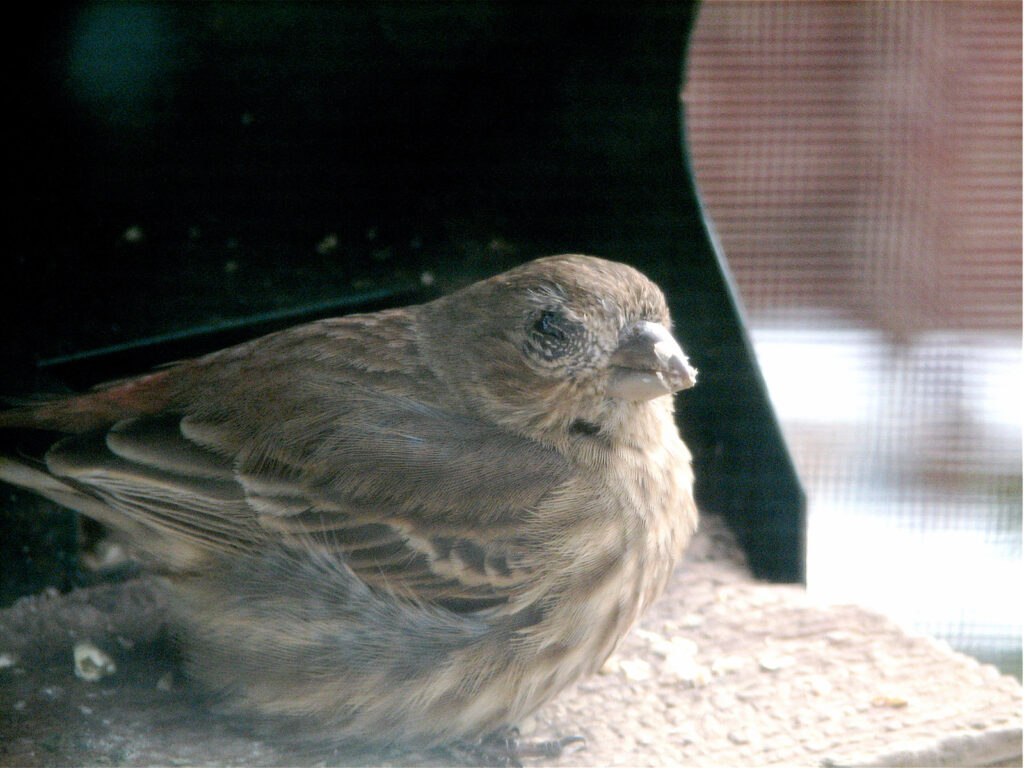
We spotted other finches with this problem through the years.
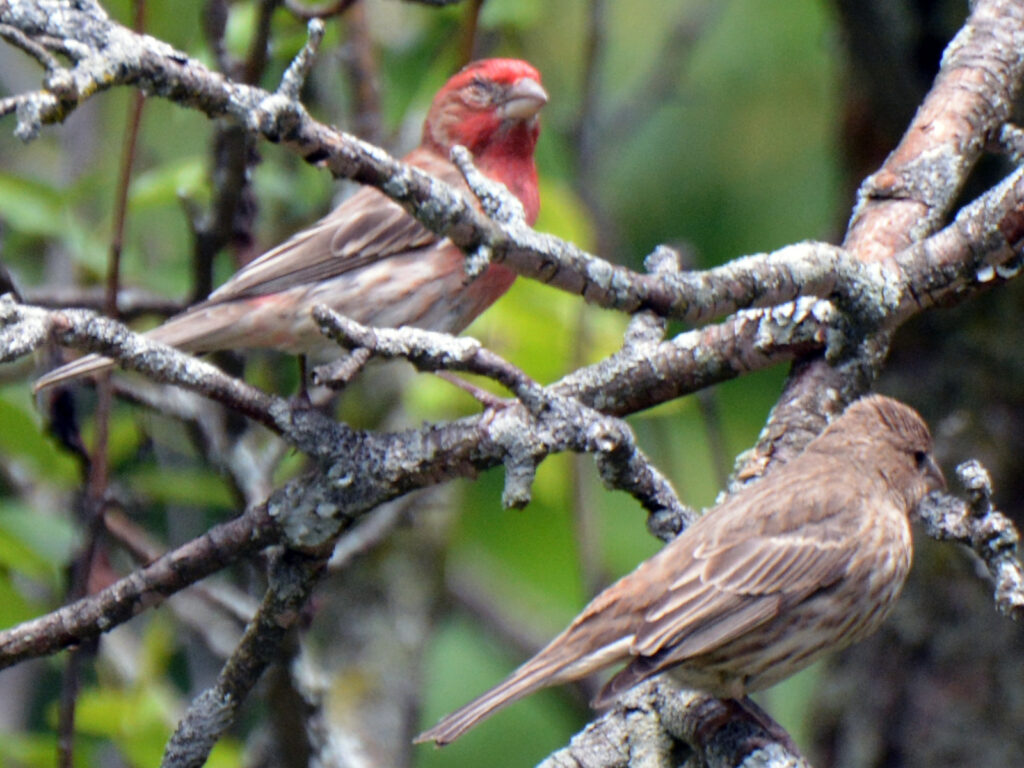
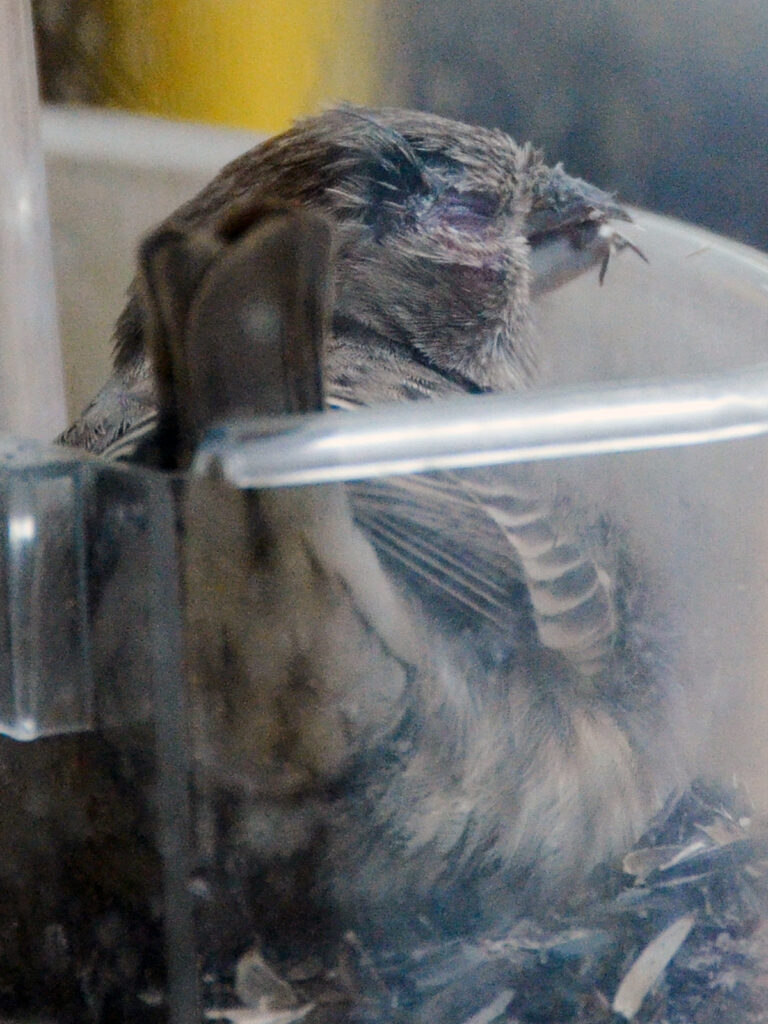
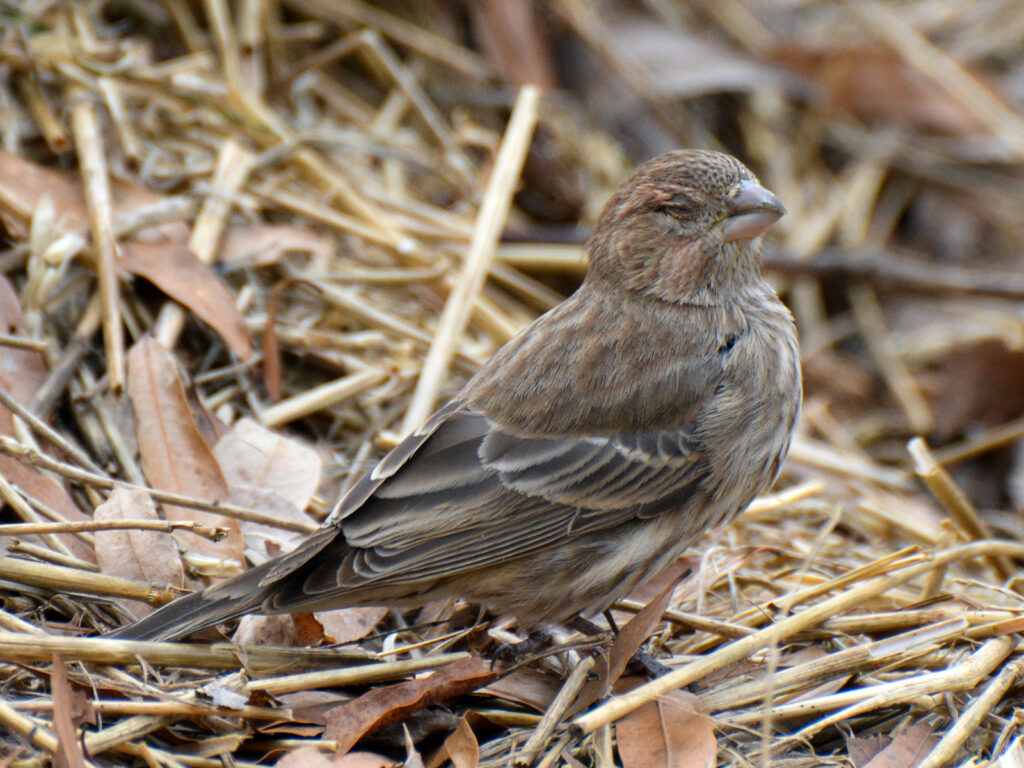
We even saw an affected bird in North Carolina, where we were visiting our children.
We’ve also seen white-throated sparrows and house sparrows with this disease. It’s not surprising to see house sparrows with the disease since they are not true sparrows, but actually weaver finches, but we were surprised to see the white-throated sparrow with the problem.

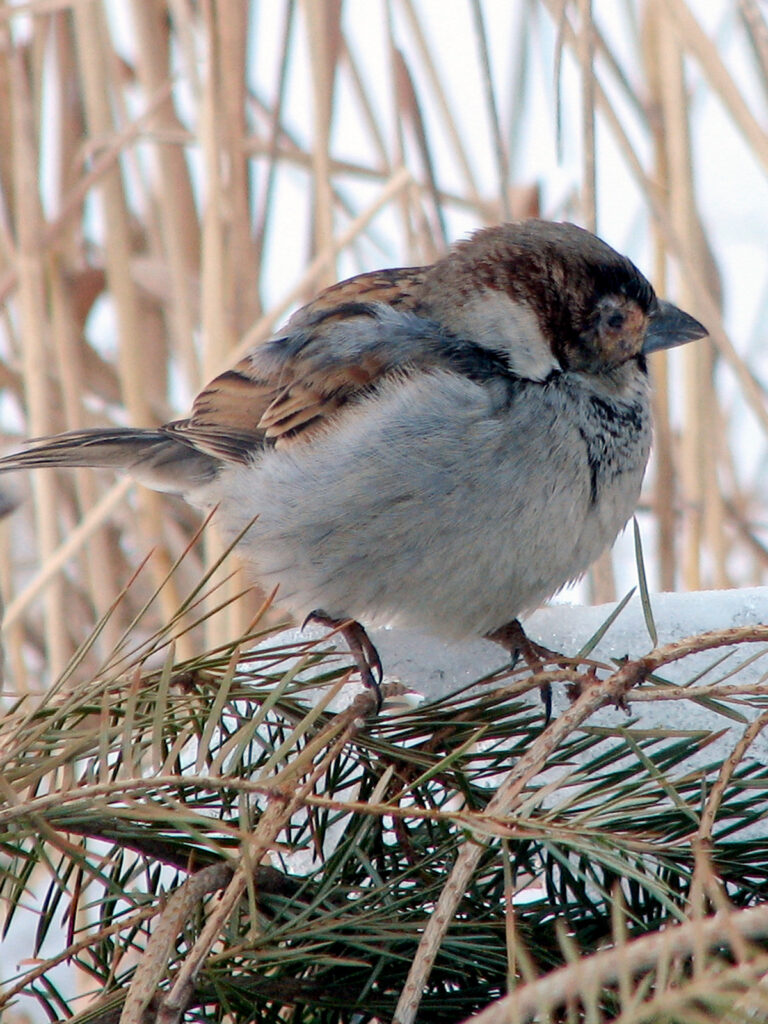
We spotted a blue jay and a robin, too, though it seems it may not be as common in these species. Whether the eye disease in these birds is the same as the House Finch Eye disease, I don’t know.
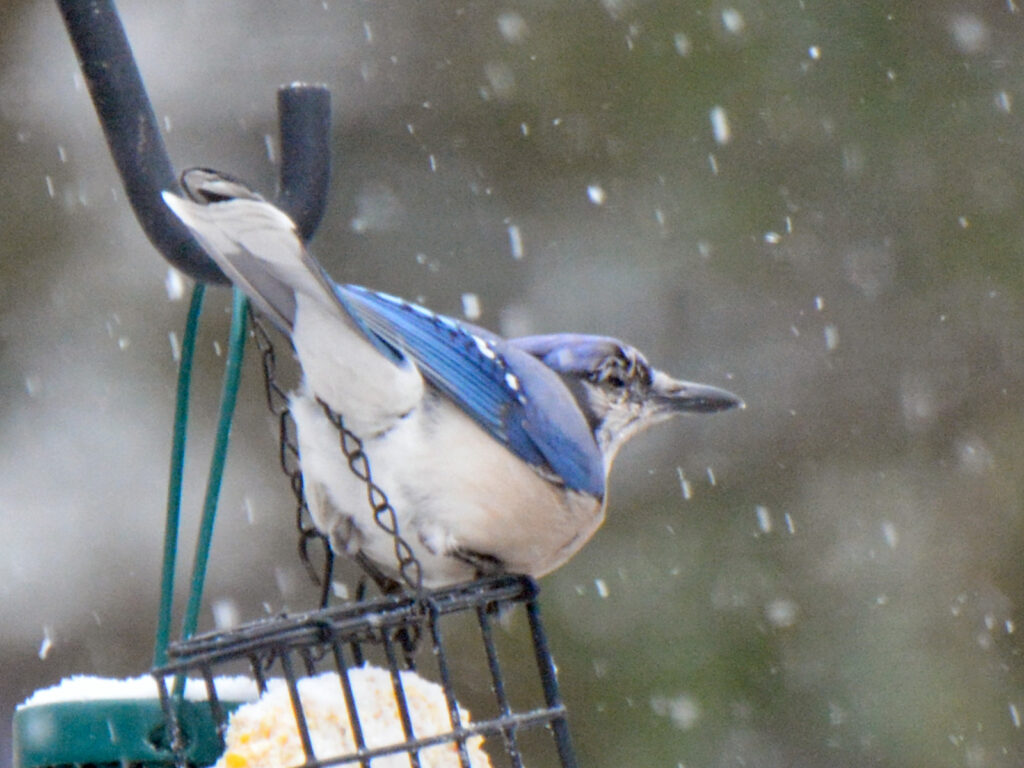
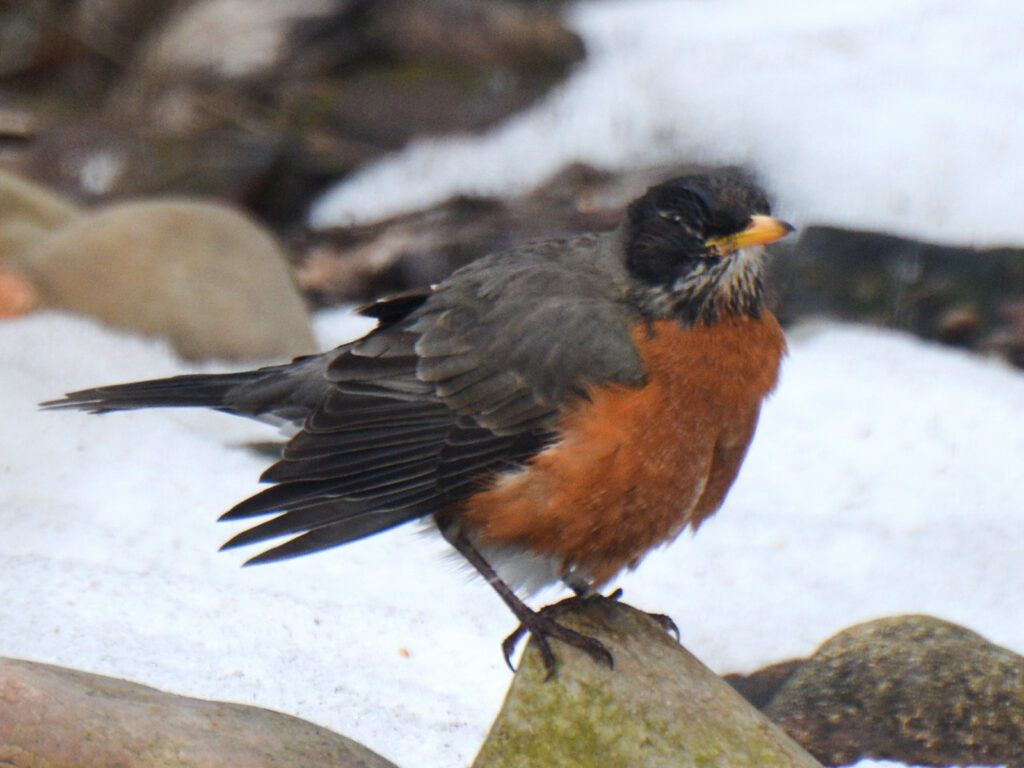
Beak deformities
Beaks are essential to a bird’s ability to eat and survive, so any deformity is serious.

The USGS did a lot of research on this disorder in Alaska many years ago: “This disease, called avian keratin disorder (AKD), is characterized by debilitating beak overgrowth and other abnormalities of keratinized tissues. Affected birds have difficulty feeding and preening, and may suffer high rates of mortality.”
This disease evidently disproportionally affects chickadees. This chickadee came to our feeder in 2009 and is the only time we’ve spotted this disease.
Other beak problems
We’ve seen a few finches with a different beak problem:
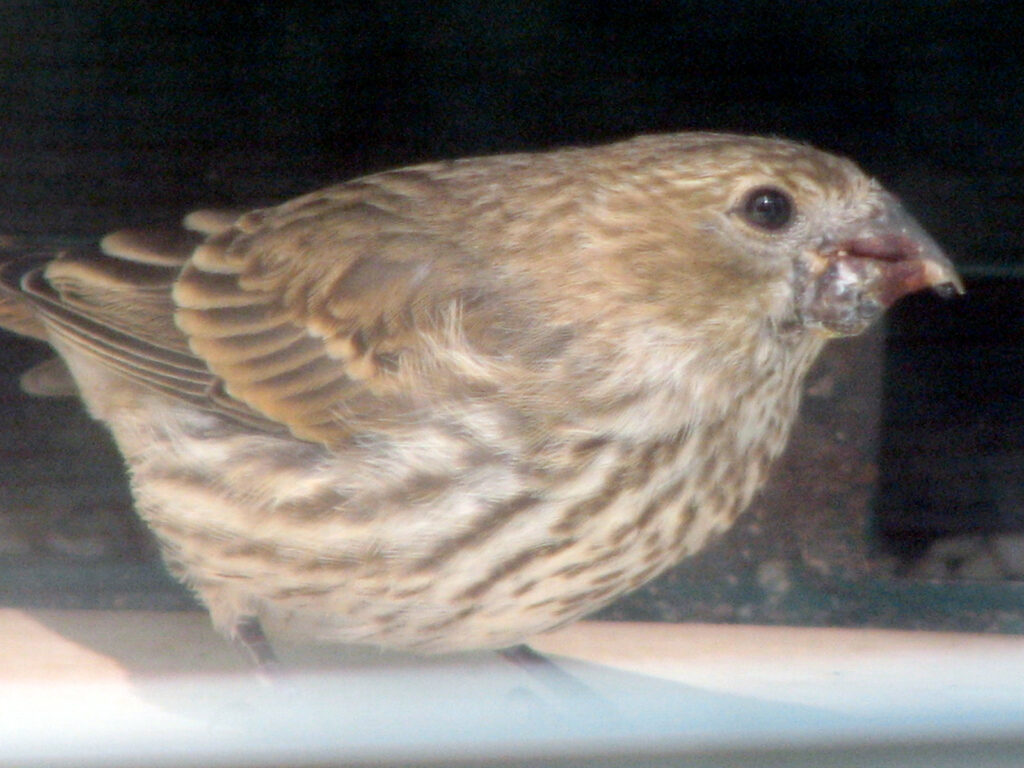

Other illnesses
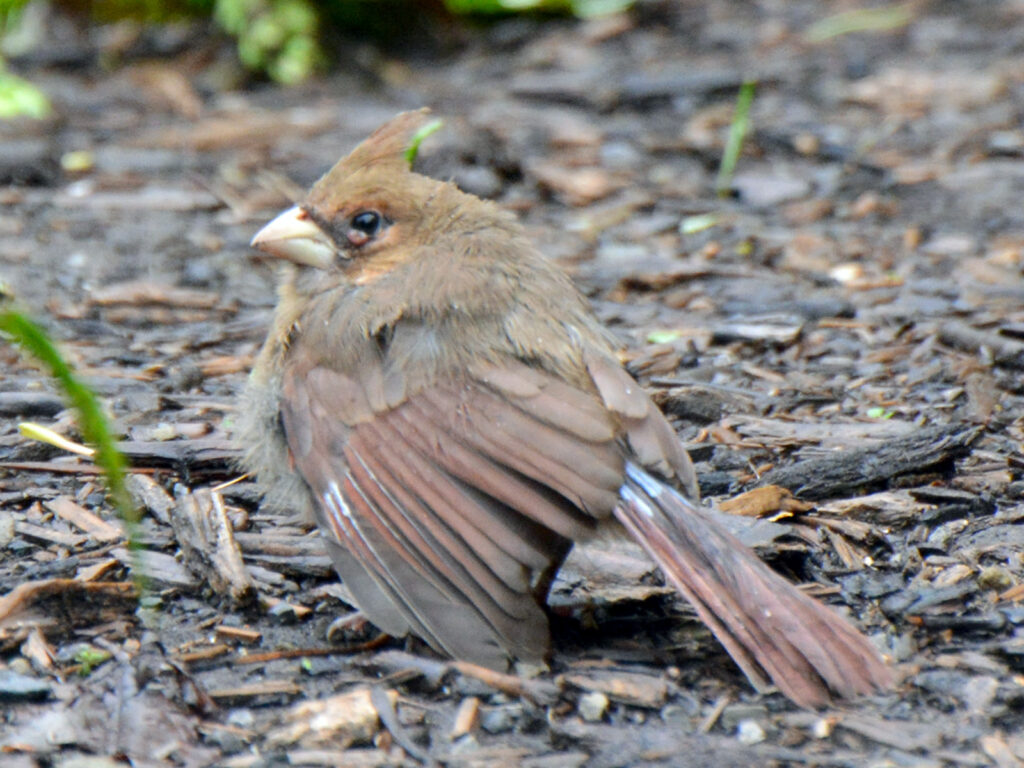
It’s hard to know what’s wrong with this cardinal, but it isn’t acting healthy. The only specific thing I notice is that there’s a growth on the bottom of the eye, so it’s probably just the beginnings of one of the usual eye diseases.
Salmonella has also been reported (see Resources section for more info.)
Benign conditions and oddities
We’ve seen some birds that have some abnormalities that aren’t life-threatening.
Pied birds
Occasionally, we’ve seen birds with partially white feathers. Until a few years ago I didn’t realize that there was a name for this condition: “pied,” technically called leucism or partial albinism. Fortunately, this doesn’t seem to impact a bird’s health.
This robin (below) was around our yard for quite a while. It has a condition called leucism – an absence of pigment on some of its feathers. This didn’t seem to cause a problem for it. We also happened to see another similar individual on our walks around the neighborhood.
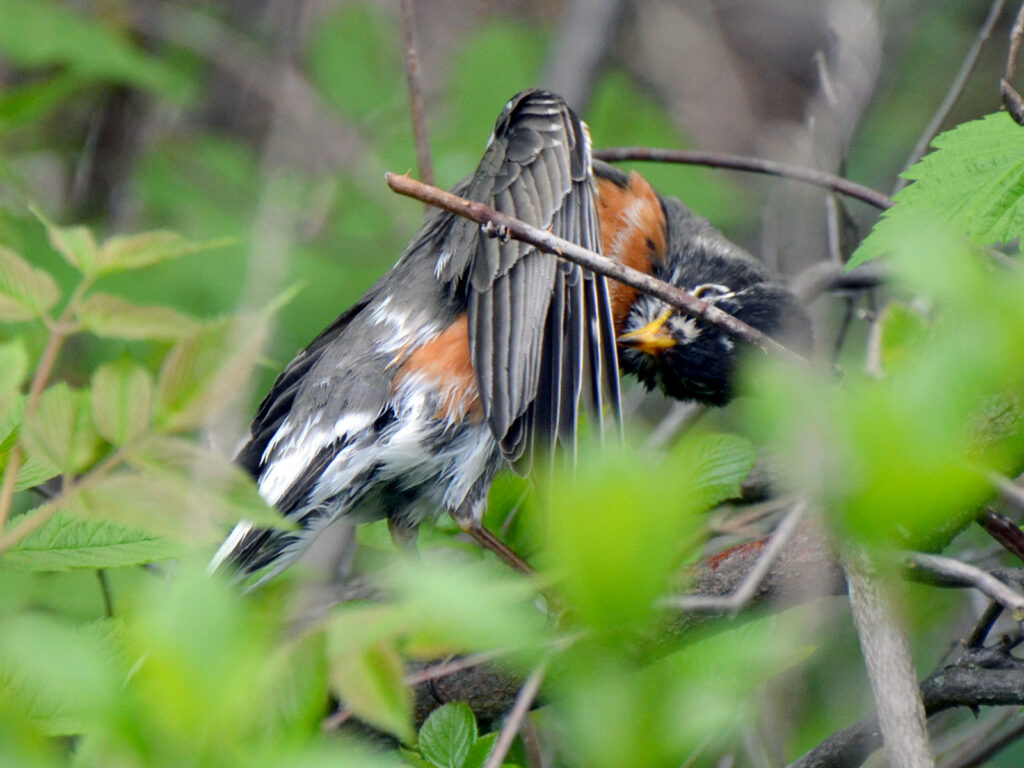

We saw a chickadee, too.
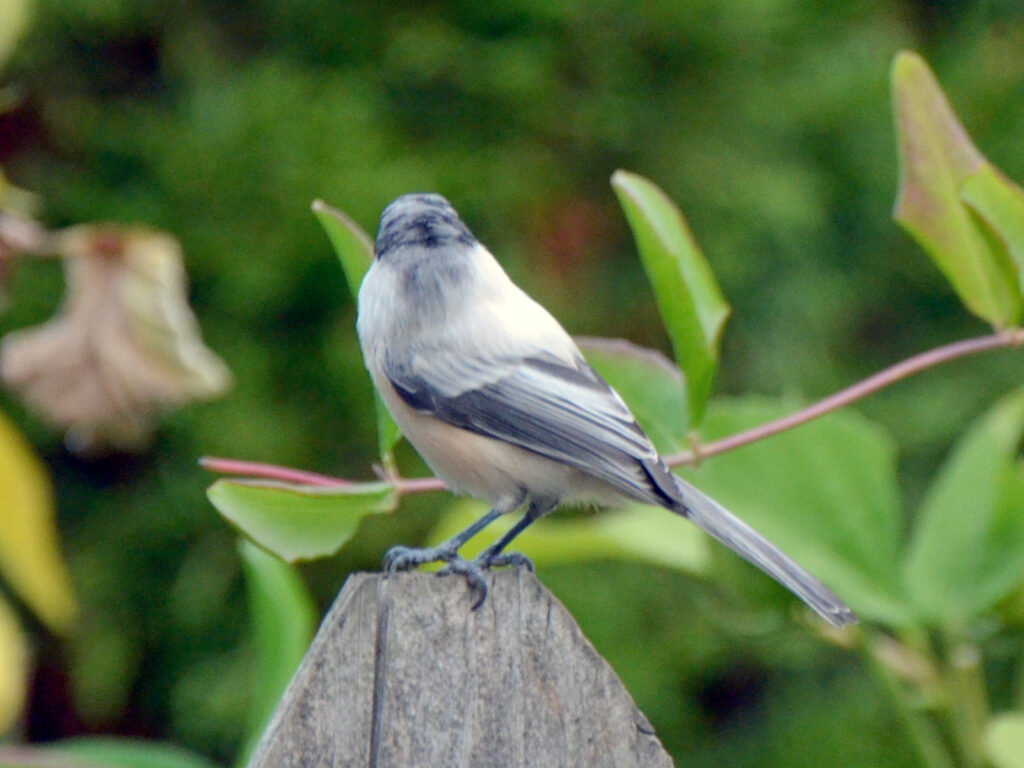

Balding
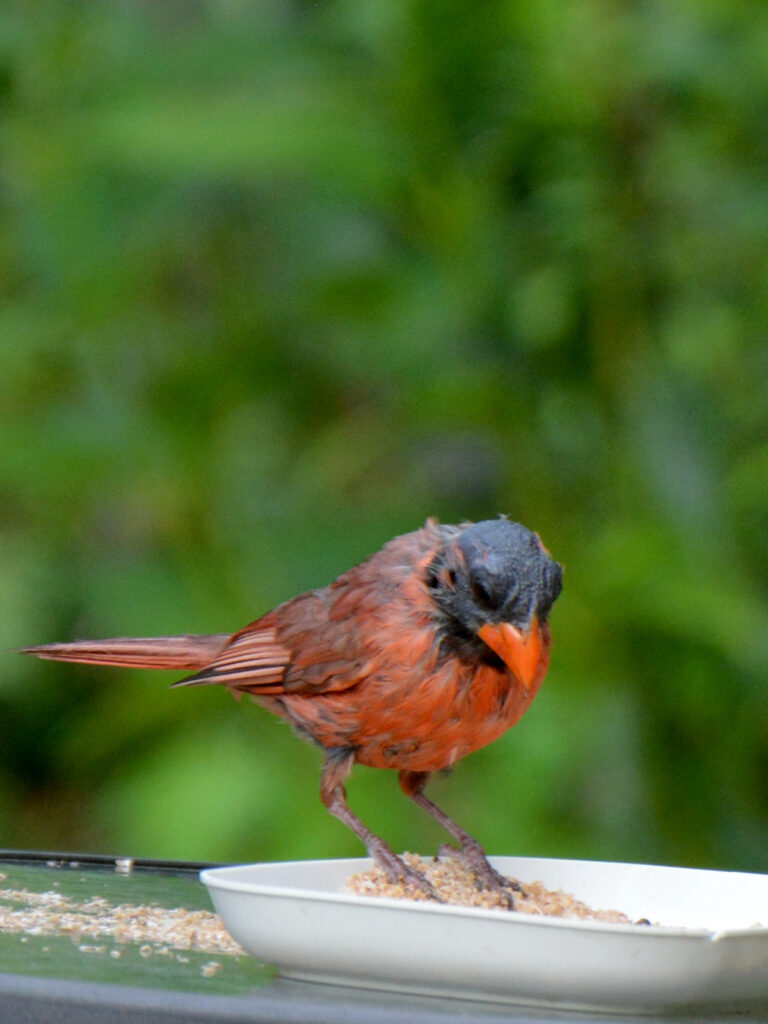
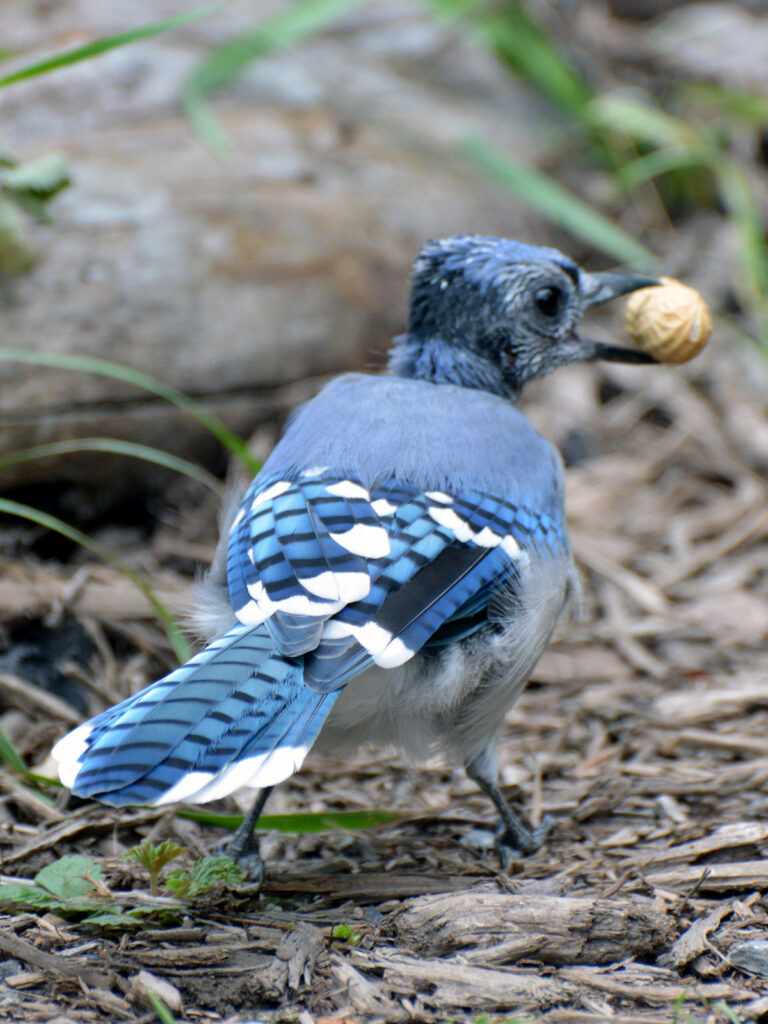
This baldness tends to occur in blue jays and cardinals during molts.
It’s temporary (and in fact this blue jay’s feathers have already started to grow back), but it sure does look funny!
Resources
- Cornell Lab of Ornithology:
- Sick birds and bird diseases – eye diseases and salmonellosis
- Unusual birds – including some of the conditions above
- Bird plumage – both normal differences and leucism
- Hilton Pond:
- Thoughts about bird feeders and disease – Very interesting observations!
- NYS DEC:
- Cool Green Science:
- Portland Audubon Patient of the Week:
- House finch can see clearly now the conjunctivitis is gone – A wildlife rehab person can help cure a bird, but the best thing we can do is keep our feeders clean
- NY Audubon:
- Bird Watcher’s General Store:
